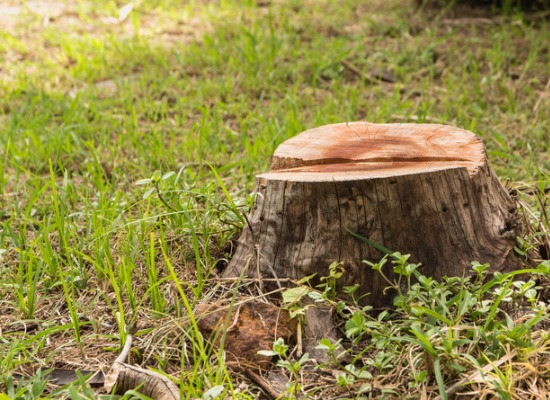TREE EDUCATION

There are many reasons why one may choose to eliminate a tree stump in your yard or landscape. Following tree removal, a leftover stump on your property may become an eyesore and a potential safety hazard. Aside from improving the aesthetic value of your outdoor space and remediating sanitation concerns, removing a tree stump can help ensure the safety of your workforce, family, neighbors, and passersby depending on the stump's location. Here, SkyFrog Tree Service discusses the advantages and disadvantages of stump grinding and stump removal, two techniques commonly used for tree-stump elimination.
For all of your tree care needs, contact us to request a free estimate or to learn more about our wide range of tree services. We also provide tree restoration and preservation services!
Eliminating leftover tree stumps in your front yard, back yard, garden, or other location on your property, either by tree stump grinding or tree stump removal, is one of the most important aspects of tree and landscape maintenance and should be executed only by an arborist or tree specialist. Should you consider keeping the tree stump, this choice has several disadvantages, including the following.
Leaving stumps unattended can result in the growth of smaller trees around the stump, which can prove costly to eliminate when they become established. These trees can also steal vital nutrients from surrounding trees and plants, causing them to wither and die over time.
Tree stumps can pose a highly hazardous problem, potentially resulting in accidents when children and adults stumble over them. Stumps can also make it more difficult to properly care for the landscape, causing damage to lawn mowers and other landscaping appliances and machinery.
Tree stumps can attract various different diseases and pests, such as carpenter ants, termites, and beetles, which are all attracted to decaying tree stumps. These pests pose an environmental concern for other trees and plants as well as your home or business. Leftover tree stumps can also harbor diseases and fungi, putting other plants at risk of becoming infected and dying.
While healthy, new, and established trees make for ideal commercial or residential landscape enhancements, a leftover tree stump can overwhelmingly have the opposite effect. Tree stumps can pose an eyesore to even the most beautiful landscapes, while weeds, mold, fungi, and pests on or near the stumps can reduce the aesthetic value of the outdoor space.
Tree stump grinding is an intricate process in which the stump of the tree is excavated while the roots of the stump are left behind. The process of stump grinding involves mechanically grinding out the stump, leaving behind sawdust residue. One advantage of tree stump grinding is that the stump can be ground to the property owner’s desired height. The stump can be ground down to just an inch below the soil level or as low as multiple inches underground. Following stump grinding, the leftover material mixes with the surrounding soil over time. This typically levels the ground, eliminating the requirement for extra filling. If the stump is infected with certain fungi, however, surrounding plants can become infected and die. In this case, properly disposing of the residual materials following stump grinding is advisable.
Tree stump removal, on the other hand, involves excavating and removing the entire stump (including the stump and its roots from the ground). In most cases, tree stump removal requires heavy force, and the machines used to achieve this have high-powered requirements. Because the roots are removed with the stump during tree stump removal, this can create a large hole in the ground, requiring filling with soil or other materials to avoid people and animals from falling into the hole and becoming injured thereafter. Tree stump removal, however, can be beneficial for those seeking to replant a tree in the spot where the stump once was. If the process of replanting a tree in that exact spot is appealing, then removing the stump and its roots completely may be ideal. Tree stump removal clears the surface and under-soil area, ensuring that the subsequent tree is free to grow without issue.